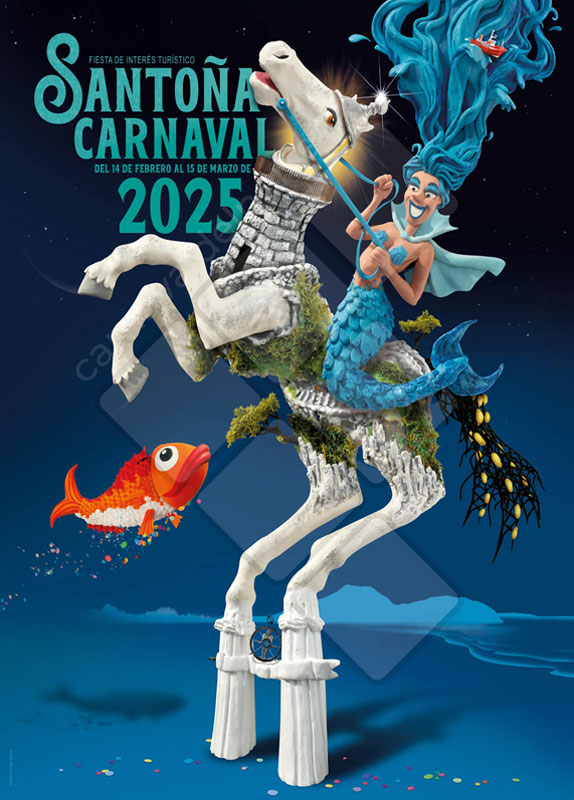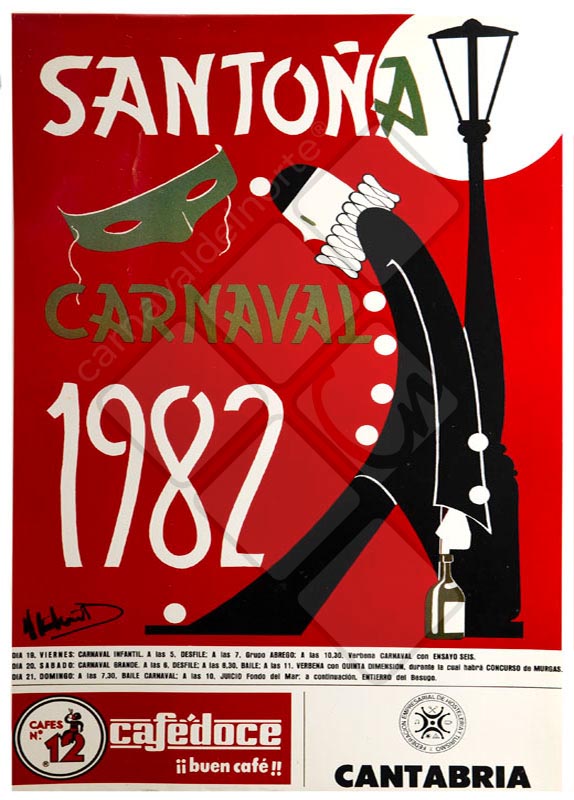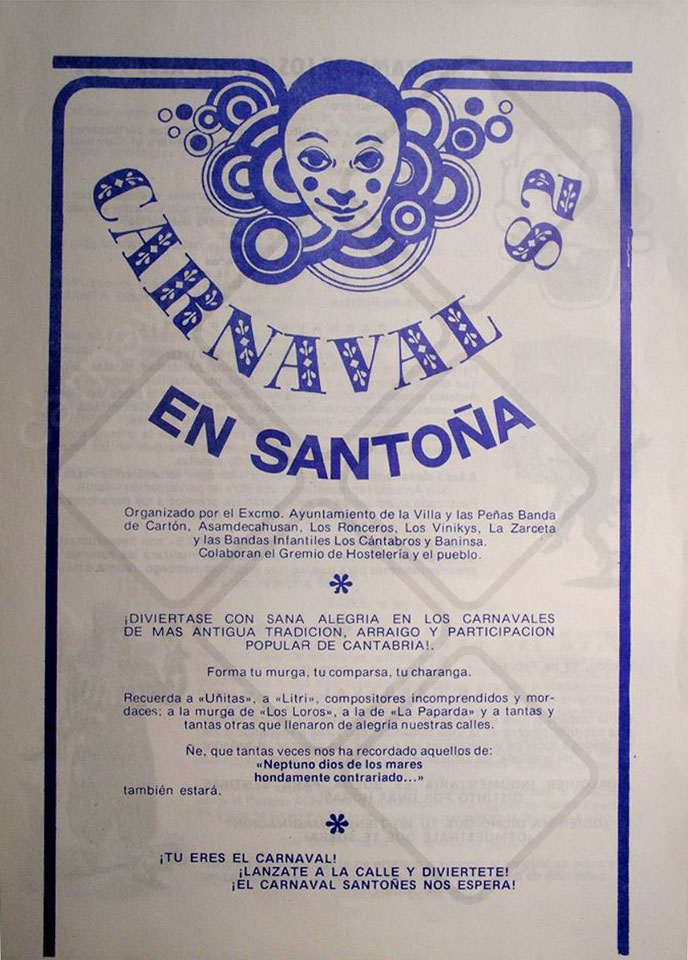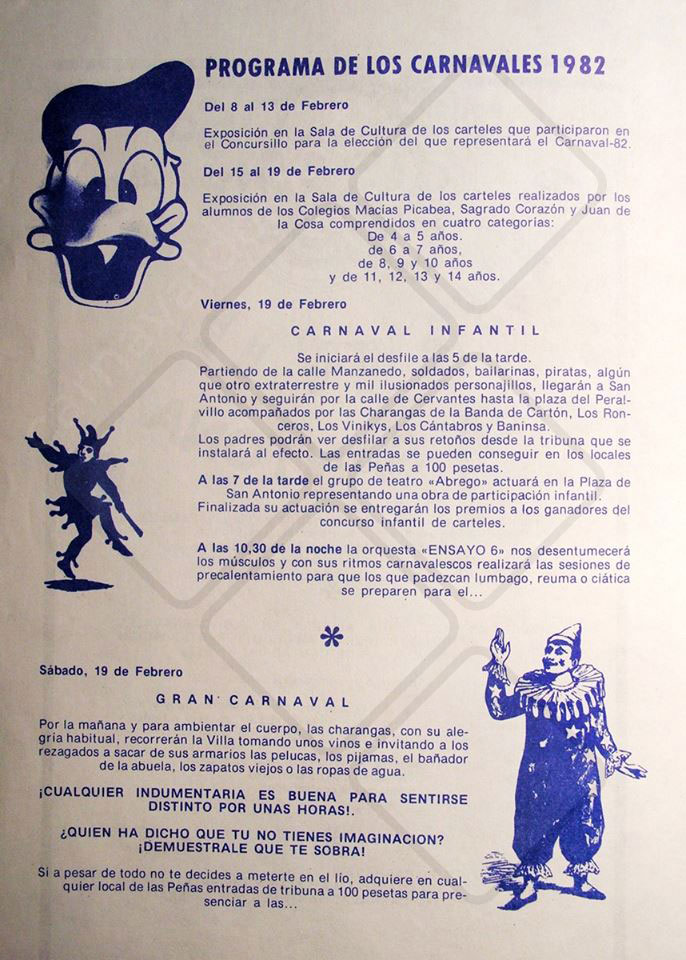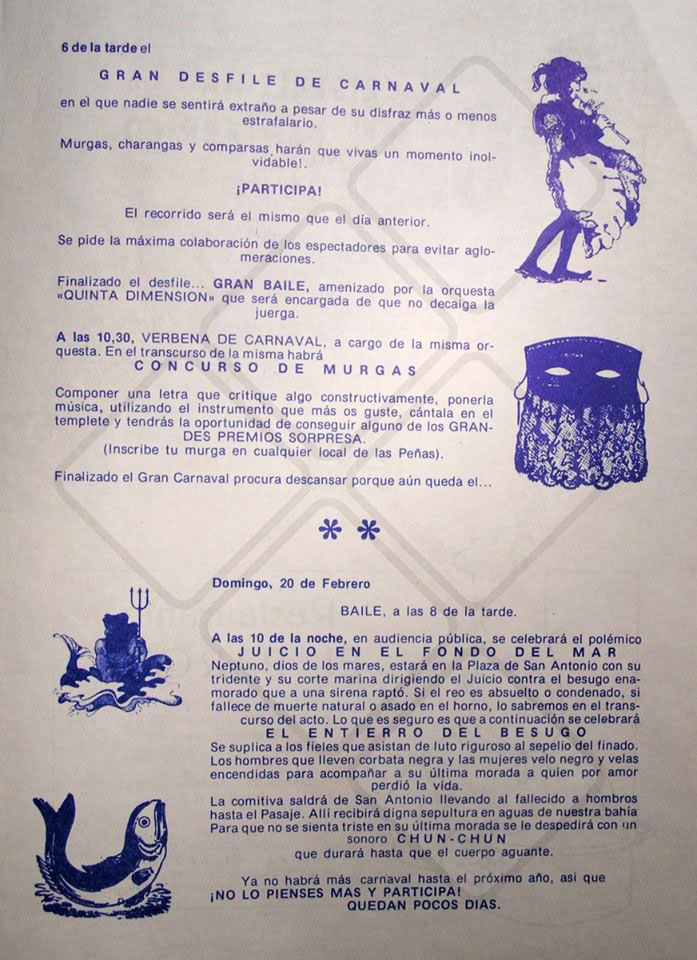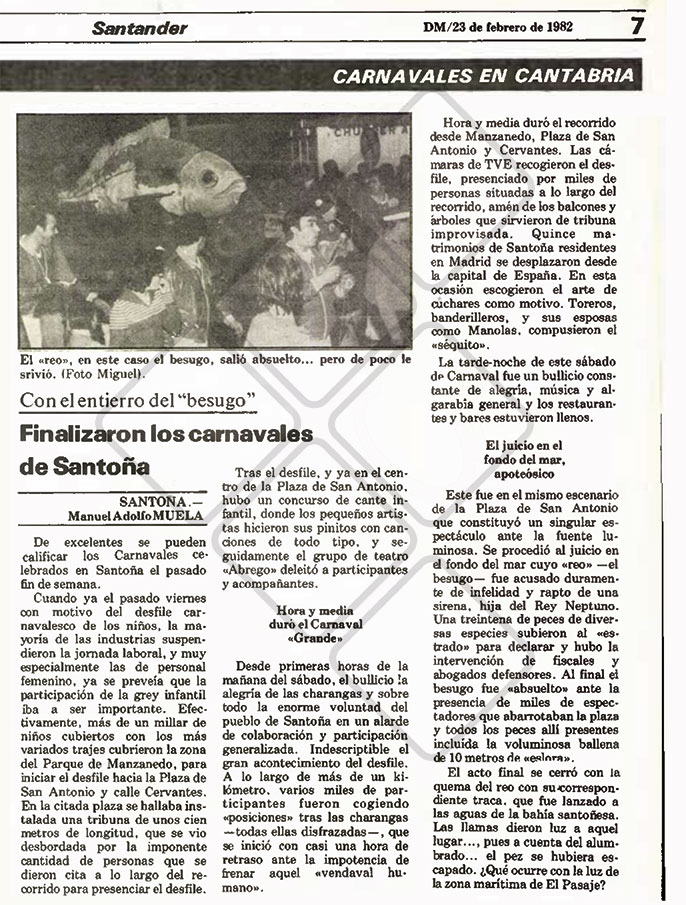"....In 1982, the Pro-Carnival commission was created, the carnivals went from 1 to three days of celebration, including the Children's Carnival, and the Day of Mourning with the trial at the bottom of the sea...."
Carnival history 1982
Following the resounding success of participation in the 1981 Carnival, and with enthusiasm still high, the City Council, the local clubs, associations, and the general public eagerly set to work on organizing the 1982 Carnival.
To coordinate these efforts, several meetings were held, and the Pro-Carnival Commission was created. The first meeting took place on December 4, 1981, presided over by Mr. Andrés Ruiz Teja, the councilor for Celebrations of the Santoña City Council. Various local clubs and associations were represented at this meeting, such as "Amigos del Mar," "Asamdecahusan," "Banda de Cartón," "Peña Los Ronceros," "Peña los Vinikis," and "Peña de la Zarceta."
During the meeting, key topics were discussed, such as securing funding to cover the organization costs of the Carnival. The inclusion of a performance by murgas in the official program was also approved, and it was agreed to organize a competition to select the event’s promotional poster. One of the most significant changes was the extension of the Carnival's duration, which would increase from one day to three.
The new program established that Friday, February 19, would be dedicated to the children's Carnival, featuring an afternoon parade followed by a theatrical performance in the Plaza de San Antonio, and culminating with a concert by an orchestra in the evening. Saturday, February 20, would be the main day of the Carnival, with the Grand Parade as the main event, followed by the Carnival Dance, during which the murgas performance would take place with great surprise prizes. Finally, Sunday, February 21, would initially be reserved for the "Burial of the Sardine," which later transformed into the "Burial of the Besugo," in addition to the first-time celebration of the "Trial in the Depths of the Sea."
A week before the Carnival celebrations, the posters with the schedule for Carnival '82 were already posted all over Santoña, and this was reported by the press:
"The Carnival Program is Ready"
Just a week before the Carnival celebrations, Santoña is experiencing a pre-festival atmosphere for these events, which have a long tradition in the town. It is worth noting that our locality is the only one in the region that has maintained these celebrations in recent years.
The posters announcing the program prepared for this year are already in the streets, which will take place on the 19th, 20th, and 21st. On the 19th, the festivities will kick off with the celebration of the children's Carnival, featuring a parade that will begin around five in the afternoon. The route will include the streets of Manzanedo, Plaza de San Antonio, Cervantes, and Peralvillo, with the participation of "La Banda de Cartón" and the clubs "Los Vinikis," "Los Ronceros," and the children's groups "Los Cántabros" and "Baninsa."
On Saturday, the 20th, the grand Carnival parade will take place, following the same streets mentioned. At ten o'clock at night, the great Carnival dance and celebration will begin, during which the murgas contest will be held. The Carnival will conclude on Sunday, the 21st, at ten o'clock at night.
The Santoña Carnival of 1982 marked an important milestone in the history of this festivity, with the preparation of the first program by the Pro-Carnival Commission, which included the scheduled events for the celebration. The distribution of 2,000 hand programs, spread both in the town and its surroundings, helped to spread the festive spirit and engage the residents in the celebration.
The Pro-Carnival Commission played a key role in organizing the event, holding a total of seven intensive meetings prior to the Carnival to ensure that the organization was flawless. Among the most important agreements were those that allowed the participation of the entire community: for example, the directors of local schools agreed to suspend classes on Friday afternoon, which enabled children to participate in the children's Carnival. Significant agreements were also reached with labor unions to close factories on Friday afternoon, thus facilitating the participation of workers.
The revival of this ancient carnival, with its historical and cultural references, has been crucial to the identity of the festivity and its enduring success.
Mayor José Luis Gutiérrez Bicarregui was a key figure in promoting the Santoña Carnival in 1982, achieving extensive coverage of the event in the press, radio, and television. This promotion was fundamental in attracting both local and regional attention to a celebration that would, over time, become one of the most emblematic in northern Spain.
During this edition of the carnival, several elements that are now traditions began to take shape. Among them stands out the "Day of Mourning," which included a morning diana organized by local clubs, and, of course, the famous "Paseo del Reo" along with the "Trial in the Depths of the Sea." The latter, in particular, was born from the desire to revive the ancient carnival that had been spoken of by the elders of the locality. It was thanks to the inspiration from stories told by Domingo Larrañaga, known as "Ñe," and his participation in the murga "Los Parrandistas" in 1934 that the idea of the "Trial in the Depths of the Sea" began to take shape. This murga, titled as such, was mentioned in an article by Professor Carmen Galán Bustamante in the magazine Santoña in September 1963, in a text called "Santoña and its Popular Poetry."
José Carlos Juncal, taking the text from this murga, adapted it and turned it into the script for what is now a unique celebration in the world: "The Trial in the Depths of the Sea." This event, along with the "Paseo del Reo," remains a fundamental part of the Santoña Carnival program today, solidifying its status as a deeply rooted tradition in the local culture.
And this is how the press described the events of our Carnivals on February 23, 1982:
"The Santoña Carnivals Have Concluded"
… The route lasted an hour and a half, starting from Manzanedo, passing through Plaza de San Antonio and Cervantes. The cameras from TVE captured the parade, witnessed by thousands of people along the route, as well as from the balconies and trees that served as improvised viewing stands. Fifteen couples from Santoña residing in Madrid traveled from the capital of Spain.
The Trial in the Depths of the Sea: A Spectacular Event
This took place in the same setting of Plaza de San Antonio, creating a unique spectacle in front of the illuminated fountain. The trial in the depths of the sea commenced, where the "defendant," the besugo (a type of fish), was harshly accused of infidelity and the abduction of a mermaid, the daughter of King Neptune.
About thirty fish from various species took to the "witness stand" to testify, and there were interventions from prosecutors and defense attorneys. In the end, the besugo was "acquitted" in front of thousands of spectators who packed the square, along with all the fish present, including the voluminous ten-meter-long whale. The final act concluded with the burning of the defendant amid the corresponding fireworks, which were launched into the waters of Santoña Bay.
The 1982 Carnival in Santoña marked a pivotal moment in the history of this festivity, as it established a broader and more diverse format encompassing a series of events over an entire weekend. The introduction of the children's Carnival and the Day of Mourning, along with the original "Trial in the Depths of the Sea," highlighted the creativity and uniqueness of the local carnival. These elements not only diversified the activities but also helped solidify the popularity and appeal of the carnival, transforming it into an emblematic event that attracts both residents and visitors.



